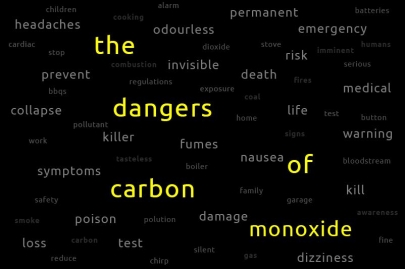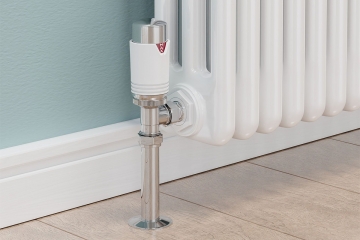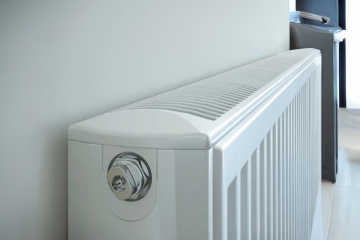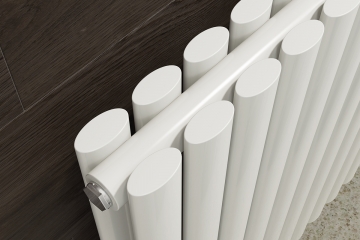The Dangers of Carbon Monoxide

The Dangers of Carbon Monoxide
When moving into a home or installing new appliances, it's important to be aware of the dangers of carbon monoxide. Carbon monoxide (CO) is a highly poisonous byproduct of unsafe gas appliances. Contact with carbon monoxide can cause significant long term health issues, including brain damage, and prolonged exposure can even lead to death. CO is odourless and invisible to the naked eye, making it near impossible to detect without the proper equipment. Fortunately, there are simple methods to ensure you're protected against carbon monoxide leaks and its effects.
What is Carbon Monoxide?
Carbon monoxide is produced when natural gas or liquid petroleum gas (LPG) are not properly burned. It is created in a similar reaction to carbon dioxide but where there is not enough oxygen present during the process. This is usually the result of an improperly fitted or faulty appliance and can also spread into your home if your chimney, vents or flue are obstructed. Naturally occurring CO is often the result of burning fossil fuels such as wood and coal, though this is less likely to release an immediately dangerous quantity as long as your chimney is clear. It's even more important to be conscious of potential leaks in small, enclosed areas such as caravans and boats.
Carbon Monoxide Poisoning
Carbon monoxide poisoning is the result of CO entering your body and replacing the oxygen in your blood. As your cells require oxygen to survive, this process results in cellular death, causing the shutdown of bodily functions as this deoxygenated blood passes through your bloodstream. Short term effects of this include nausea and breathing difficulties, while more concentrated exposure can cause brain damage and paralysis. Some of the more severe symptoms can occur even without prolonged exposure, so it's important to pay attention to any indication that you might have a carbon monoxide leak in your property. There are approximately 25 carbon monoxide related deaths per year in England and Wales, highlighting how vital it is to ensure you're protected.
Signs of a Carbon Monoxide Leak
While carbon monoxide itself is invisible to the naked eye, there are a few signs you can observe in your property that might suggest a leak. These include dark stains on the surfaces around your appliances, pilot lights frequently blowing out, yellow or orange flames on gas hobs rather than focused blue flames and increased condensation on your windows in rooms with gas appliances. Routinely having your gas appliances inspected will also minimise the risk of them becoming dangerously faulty. The long term effects of carbon monoxide are greatly reduced if you can avoid prolonged exposure, so it's important to minimise the time you're in the presence of a leak.
Signs of Carbon Monoxide Poisoning
There are a number of major symptoms that can indicate carbon monoxide exposure. The most common of these is a tension-type headache, an ache that affects both sides of the head, a feeling of tightness in the neck muscles and pressure behind the eyes. Other symptoms include dizziness, nausea, vomiting, tiredness, confusion, stomach pain and difficulty breathing. These symptoms are generally similar to those of flu or food poisoning sufferers but with the important distinction that they don't include a high temperature or fever. Prolonged exposure can intensify these symptoms, eventually leading to collapse or loss of consciousness. Another sign of carbon monoxide poisoning is suffering these symptoms in a particular location; if you feel unwell at home but your condition improves when you leave, it's possible you have a leak somewhere in your house. If others in your household begin exhibiting these symptoms at a similar time, including pets, carbon monoxide poisoning is a very possible cause.
If You Suspect Carbon Monoxide Poisoning
If you suspect a carbon monoxide leak in your home, act as quickly as possible. Open your windows and doors, turn off your gas appliances and head outside. Immediately go to your local GP or, if necessary, your nearest hospital. If you tell them that you think you're suffering from carbon monoxide poisoning, they'll administer a breath test or check your blood to be sure. If you believe there's a leak and that it poses an immediate danger, you can call the Gas Emergency Helpline at 0800 111 999. In less urgent cases, you can call a registered gas engineer to check your appliances and find out whether or not there's a problem.
Carbon Monoxide Alarms
Placing an audible carbon monoxide alarm in your home will help you detect leaks, though they shouldn't be used as an excuse for not regularly checking your appliances. Prevention is better than detection but a CO alarm will serve well as extra protection against prolonged exposure. You can purchase a CO alarm from most DIY shops and home improvement retailers but check it's marked with an EN 50291, the British Standards Kitemark or an equivalent European mark. A good electronic alarm will be inexpensive and is an investment that could save lives.
While there are older “spot” detectors, which change colour as they react to the presence of carbon monoxide in the air, these are outdated and won't alert you to a CO leak unless you actively check them. As carbon monoxide leaks are especially dangerous while you're asleep, it's much safer to use an electric alarm, which will beep to alert you as soon as it detects a leak, such as this unit available directly from British Gas.
Place an alarm in any room where a gas appliance is present and be sure to test that they work. There are special testing kits available but a quick, easy alternative is to light an incense stick next to the alarm and see if it's triggered. A CO alarm will usually last for approximately five years and will usually have a built in warning, for example beeping, when their batteries are running low. Always ensure your alarms are powered; more expensive units can be wired into your electrical supply, meaning you won't have to worry about batteries.
Carbon monoxide is something you should be conscious of but, by taking the proper precautions, you won't need to live in fear of it. By having your appliances installed and serviced by qualified professionals and ensuring you have alarms properly placed and operational, you can enjoy all the comforts of your home for many years to come.
Related Posts
Understanding how TRVs actually function can save you a fair chunk of money on heating bills whilst making your home more comfortable. They're cleverer than they look, and once you know what you're doing with them, they pretty much run themselves.
Your heating's on, but some rooms are tropical while others feel like winter? The culprit is most likely unbalanced radiators. Let's take a closer look.
When you're replacing radiators or fitting new ones, you'll quickly hit this question: single or double panel? Let's sort out which you actually need.




